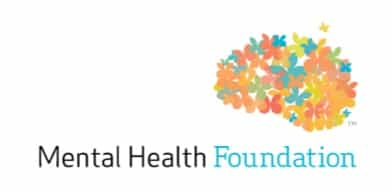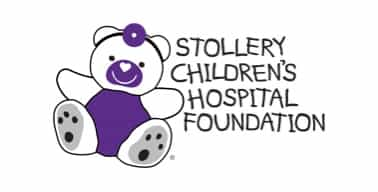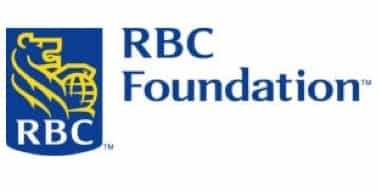Cannabis, commonly called marijuana, pot or weed, is a product made from the cannabis or hemp plant.
The leaves and flowers of this plant are often used for recreational purposes. More research is still needed to understand if it’s actually helpful for medical purposes.
There are two main ingredients that cause the effects of cannabis:
- THC (found in the Sativa plant) – the main chemical ingredient of cannabis that produces the high.
- CBD (found in the Indica plant) – does not produce a high, but can make you sleepy.
Different types of cannabis plants will contain different amounts of each chemical. Some will have more THC, some more CBD, and some will have a mix of both. As well, cannabis comes in many forms!
- Marijuana – dried leaves and flowers or ‘buds’ of the hemp plant that is often smoked.
- “Hash” – pressed resin from flowers and leaves.
- Hash oil – a concentrated extract that is smoked, vaped, eaten, and more.
- Edibles – tea, brownies, cookies, chocolate, gummies, or eaten in other ways.
- Cannabis oil – usually CBD, taken as a drop put under the tongue.
How Does Cannabis Affect the Body?
Cannabis can be used in a variety of ways, and how you use it will change the effect and how long it lasts. However, the chemicals in cannabis will affect how you behave, think, and feel.
Some effects of cannabis include:
- Getting high
- Often a reason why someone may choose to use cannabis.
- You may feel more relaxed or you may feel excited or happy. You might also feel scared, nervous or paranoid. Cannabis will feel different for each person, it might make some feel good and others feel bad or uncomfortable.
- Anxiety
- Although cannabis may make you feel relaxed, it can negatively affect your mental health.
- Some people can feel extreme anxiety, depression, or panic-like symptoms.
- Using cannabis might also make you feel worse if you already have something like anxiety or depression.
- Alter experience
- You may experience time differently than normal. For example, time might feel slower.
- Increased hunger
- You may have heard this called “the munchies”.
Is There a Way to Use Cannabis Safely?
No matter how you use it, cannabis use poses risks to your health. The only way to completely avoid risk is by choosing not to use cannabis. If you decide to use it, follow these recommendations to lower the risks to your health.
- Delay age of first use. Teenagers, especially those younger than 16, should wait to use cannabis for as long as possible. You’ll lower your risk of cannabis-related health problems if you choose to start using cannabis later in life.
- Choose low-strength products. Cannabis products with a high level of CBD or THC are worse for your health. Using products that are high in THC may cause you to develop worse problems like dependence or mental health problems.
- Don’t use synthetic cannabis products. Compared with natural cannabis products, most synthetic cannabis products are stronger and more dangerous.
- Smoking cannabis (for example, smoking a joint) is the most harmful way of using cannabis because it directly affects your lungs. There are safer, non-smoking options that are better for your lungs. Keep in mind that these alternatives aren’t risk-free either.
- If you choose to smoke cannabis, avoid inhaling deeply or holding your breath. Doing this will increase the amount of toxins absorbed by your lungs and the rest of your body which can lead to lung problems.
- The more often you use cannabis, the more likely you are to develop health problems, especially if you use it on a daily or near-daily basis. Limit your cannabis use to occasional use at most, such as only using once a week or on weekends. Try to limit your use as much as possible.
- Cannabis use affects your ability to drive a car or operate other machinery. Do not do any of these things after using cannabis, or while you still feel high in any way. Make sure you have a safe way home!
- Some people are more likely to develop problems from cannabis use. Specifically, people with a personal or family history of psychosis or substance use problems, and pregnant people should not use cannabis at all.
- Psychosis is a term to describe a set of symptoms that result in strange or bizarre thinking, distorted perceptions (sight, sound), behaviors, and emotions. This could look like hearing or seeing something that isn’t there, a constant feeling of being watched, an inability to sleep or concentrate, and more.
- Avoid mixing cannabis with alcohol, tobacco, or other drugs.
- Avoid combining any of the risky behaviours described above. The more risks you take, the greater the chances of harming your health as a result of cannabis use.
Using Cannabis
While some people can use cannabis safely and for fun, there are always risks when using cannabis.
Here are some examples of what too much cannabis use can look like:
- Having a hard time doing things like being on time for school or work, focusing on homework or chores, missing important deadlines or events.
- Continuous use of cannabis even when it gets in the way of important things in your life like school, work, and relationships.
- Spending lots of time using cannabis, thinking about getting high, or recovering from being high.
- Regularly using more cannabis than you originally wanted to.
- Wanting to “cut down” on getting high but not being able to.
- Having strong cravings to use when you are not using.
- Needing to use a lot more than you used to, to get the same high.
- Feeling withdrawal symptoms like feeling sick, tired, restless, nausea, trouble sleeping, or a racing heart when not using cannabis.
Saying “yes” to 2 or more of these may be a sign of a Substance Use Disorder. This is another name for addiction.
Part of why youth must be careful with cannabis use is because, compared to alcohol and smoking, cannabis use has the fastest rate of transition to addiction in youth.
What Are the Risks?
- Using too much and for too long, can lead to hospitalization for cannabis addiction.
- Getting high affects your ability to drive a car. Driving while high is very dangerous and is associated with a high risk of crashes and injury.
- If you use cannabis a lot and for a long time, you might go through withdrawal when you try to stop. This causes symptoms like depression, insomnia, anxiety, and lack of appetite.
- Using cannabis regularly can cause someone to have psychotic symptoms and potentially get diagnosed with schizophrenia as an adult.
- There are possible links between regular cannabis use in youth and a higher risk for depression and suicide.
- Smoking cannabis may cause breathing or lung problems.
- Cannabis intoxication (using too much cannabis at once) can cause a person to struggle to pay attention or focus and have a hard time understanding things that are said to them. As well, they might feel very clumsy and like their body is slowed down.
- Using cannabis can make it harder to learn and do homework. Youth who use cannabis often are more likely to drop out of high school and are less likely to go to college or university.
Youth are particularly vulnerable to these negative effects because of all the changes your brain goes through while growing up. Starting to get high at a young age gets in the way of the development of brain systems, like memory, coordination, pain, mood, pleasure, and motivation. Knowing this, it’s important to stay up to date on evidence-based research on the effects of cannabis use during adolescence.
Be sure to share good information with your friends to prevent the spread of untrue marijuana myths!
Check out this page for more information on free youth mental health services that you or a loved one can access through our virtual clinic, Kickstand Connect.
Sources:
Canada’s Lower-Risk Cannabis Use Guidelines, CAMH



